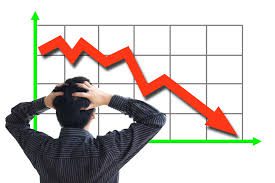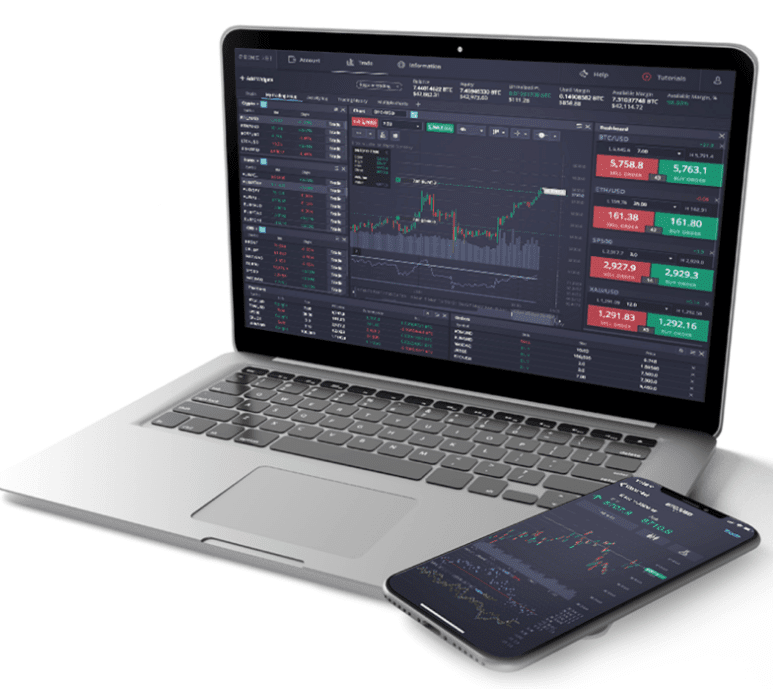George Gammon Says Dollar FX Higher Causes Global Economic Crisis
This Could Create A Global Financial Crisis
George presents another blockbuster video that explains how the strong dollar affects the global financial future. He breaks it down in an entertaining presentation that is understandable.
Pay special attention at the following points in the presentation:
18:00 Financial System Debt bubble
20:00 Slight reference to The Great Reset plan
20:17 Possibility of coming social unrest and breakdown
22:30 Global Supply Shortages
23:50 Derivatives
25:50 Swap Lines
29:00 Plaza Accord
WHAT DOES THE FUTURE HOLD? DOESN’T LOOK GOOD.
Watch for Zombie companies and bankruptcies


This Will Create A Global Economic Crisis (Here’s Why)
Check out Rebel Capitalist Pro with Chris MacIntosh, Lyn Alden and many more for $1 click here!! https://georgegammon.com/pro
623 Comments
 ️ I appreciate all the gems you are sharing here. I’m new to most of the information and try to soak up as much as I can every time you post.
️ I appreciate all the gems you are sharing here. I’m new to most of the information and try to soak up as much as I can every time you post. 
George Gammon Says Dollar FX Higher Causes Global Economic Crisis
BROUGHT TO YOU BY:


PRIMEXBT (PREPPER GRIZZ)
PrimeXBT
PROFIT FROM THE COMING STOCK MARKET MELTDOWN BY USING PRIMEXBT TO SHORT THE NASDAQ AND S&P 500 USING LEVERAGE
Read More: Profit From Stock Market Meltdown
PrimeXBT Trading
FULL VIDEO TEXT
this will create a global economic crisis
what am i referring to i’m talking about the dollar skyrocketing higher over the past few
weeks it got up to over 107 on the dxy yesterday it’s already
crushed economies like sri lanka turkey argentina ecuador and if the dollar
continues to go higher against other currencies we could see countries
collapsing like japan and even countries in western europe to the point where we
have this global economic crisis that could eventually
impact the united states i’m going to explain this to you in three simple fast
steps step number one let’s go over what the basic problem is
let’s start by going all the way back to the gfc something we all know well starts off with the average joe he takes
out a loan to buy let’s say a rental property and his monthly mortgage payment is one thousand dollars a month
let’s say his other expense is about 400 but he’s gets 1500 in rent so he’s got
positive cash flow of about 100 bucks a month not bad
but let’s say that joe has an adjustable rate mortgage
we all remember these so instead of his monthly payment being a thousand dollars now it’s 1200.
he still has the same 400 in expenses the same rent coming in 1500 but instead
of being a hundred dollars positive cash flow at the end of the month now he has
negative cash flow he has to come out of pocket to cover the expenses for the
rental property he just purchased so now let’s move on to the average joe
not as happy as he was at the beginning you could tell he’s got a big frown on
his face so he looks at his balance sheet and says oh my gosh i’ve got to come out of pocket 100 a month and it
could get worse if interest rates go even higher and my loan adjusts again
so he’s got these dollars as assets on his balance sheet but pretty soon he runs out of dollars but he still has
that loan and that monthly payment as a liability you guys know how this story
ends joe goes bankrupt because he doesn’t have any money left to cover the cost of the
rental property that he purchased because the interest rates kept going up
and up and up in other words the burden of his debt continued to
increase until he went bust and he had to give the house back to the bank then if enough
people have these adjustable rate mortgages like the average joe all of these loans go bad and this creates a
systemic risk not only for the banking system but the domestic economy and
potentially the global economy leading again to a global economic crisis
but now what we’re dealing with we’ll say we go from the gfc to what i’m calling the d dfc
the dollar financial crisis and with the dollar financial crisis it’s very
similar to what happened with the gfc and adjustable rate mortgages on homes
but now it’s about a thousand times worse and i might be understating that
because now these rates if you will adjust daily and when there are dollars that are
taking out the balance sheet to make the higher loan payments this exacerbates
the problem by paying the loans with the dollars on joe’s balance sheet it makes the debt
burden even higher and i’ll explain this in one moment but
let’s go over to not the average joe oh no but his cousin down in argentina the average
jose and the average jose starts a widget maker we’ll call it
widget xyz corporation down in argentina and they deal in pesos but
a lot of jose’s input costs are denominated in dollars so he had to go out there and take a
dollar denominated loan we’ll say his monthly payments for this dollar denominated loan are one million
dollars a month okay and let’s just assume for a moment that we start off with a one-to-one
relationship between the peso and the dollar now let’s go through what happens to
jose and you’ll see it’s the exact same thing that happened to joe but on a much
much larger scale so he’s got a one million dollar a month
payment and this is denominated in dollars but right now we’ve got a one-to-one relationship we’ll say his
expenses about 400 000 pesos per month his income about 1.5 million
pesos per month so in this example he is netting a hundred
thousand dollars or pesos per month pretty easy math
but now let’s say the dollar goes higher against the peso and this is what we
have seen to an extreme over the past few months and like i said at the
beginning of the video the dollar now is at 107 on the dxy for most of you that might
not sound like a big deal but trust me if the dollar goes up 10 20
relative to your local currency this could be the catalyst that brings
down the entire house of cards let’s keep moving on with the example so now the dollar is worth
1.2 pesos so in peso terms now the debt has become more of a
financial burden now our peso amount of the loan per month or our monthly loan payment is 1.2
million our expenses are still 400 000 our income revenue still 1.5 million so now
we’re at a loss of a hundred thousand instead of here we’re at a gain of a hundred thousand
it’s the exact same thing that happened to the average joe but what’s different
is not only does jose go bust but then he has to lay off all of his employees
which now don’t have any purchasing power to put a roof over their head buy
food etc and if jose does have pesos on his
balance sheet just like joe had dollars he’s going to sell those pesos to buy dollars to make
that monthly loan payment right but what is he doing he’s increasing the supply
of pesos and increasing the demand for dollars
which like we said here makes the dollar go higher against the peso and
exacerbates this problem in other words it makes the loss that he has every
single month even greater by using the peso cash flow or the peso
assets that he had on his balance sheet to make the previous month’s dollar
denominated loan payment but unfortunately our story doesn’t end
there it gets a lot worse for the average jose down in argentina just like
we saw with the gfc the unemployment rate spiked higher meaning the average
joe wouldn’t have as many people there to rent his property so maybe it goes
vacant to where his income goes from 1500 a month down to zero
all right well let’s say that we have this global economic crisis where the dollar going up and up and up is
reducing economic activity well that means that if the average jose
was collecting dollars let’s say part of his revenue was denominated in dollars
because he is exporting his widget to other countries and those other countries are paying him dollars
for the widgets that he is sending to them or selling them okay well so let’s
just say that he has 1.5 million dollars coming in and that loan payment is 1
million dollars per month and again expenses are 400 000 pesos but what
happens when the global economy slows down now his income or his revenue goes from
1.5 million down to 1.3 million so even if he is making dollars he’s making far
fewer dollars which takes him right back into the same position he was before
where every single month he is losing money and as he loses more and more
money he lays off more and more people and this happens globally therefore the
amount of customers he has shrinks and shrinks and shrinks and then so does his revenue therefore
putting him in a worse and worse position every single month so the main takeaway from step number
one is we had a gfc back in 2008 let’s call it but if the dollar continues to
go higher and higher and higher against other currencies we will
go into a dfc a dollar financial crisis
for the exact same reasons the bottom line is as the dollar goes higher the
debt burden increases for all of these global entities and global economies
just like it did for the average joe during the last global financial crisis
the problem is that the dfc is global
this was specific to real estate so my point is the dollar financial crisis
will be exponentially worse than the global financial crisis we saw
in 2008 step number two unfortunately it gets much much worse
for our friend the average jose why because commodities are settled
in dollars so let’s think about this if jose was in an argentina
in an alternate universe let’s say that didn’t have any dollar denominated
death like we used in this example in step number one they still have big problems
why because most of their trading partners are in the situation that we outlined in step number one
so let’s think about this in a normally functioning global economy let’s say
that we have three dollars coming in to argentina represented by this black
square and this central bank will say the argentinian central bank not sure what they call it but we’ll just say
this represents the entire banking system so if the global economy was functioning
in a healthy way again we’d have three dollars coming in all right well what does
jose do with those dollars well a lot of them he’s got to give to the bank or the
central bank to get pesos because his expenses his payroll as an example
denominated in pesos and then alternatively if jose needs to
buy some commodities let’s say wheat corn or oil he has to take some of
his pesos give them to the banking system to get those dollars in return so
he can buy those inputs because again those commodities are settled in dollars
not pesos so in other words if you don’t have the dollars to buy the stuff you
ain’t getting the stuff no matter how many pesos you have
so this puts jose in the country of argentina in this case in a very
difficult position if their trading partners start going into a recession
because they’re bringing in fewer dollars into the country so let’s think about
this in terms of the balance sheet of the banking system we have assets on the left liabilities
on the right if they have all these dollars coming in because the global economy is functioning on all eight cylinders then
they’re gonna have these three dollars on the asset side of their balance sheet they’re gonna have a lot more than just dollars on the balance sheet so keep in
mind this is only for the sake of this example then the liabilities most likely peso bank reserves or peso deposits
so if they have fewer dollars coming in then we go from their balance sheet
having three dollars to their balance sheet only having one dollar
okay but let’s think about this it takes us straight into a doom loop we’ll call
it the peso dollar doom loop that if the country is bringing in fewer dollars
well they have to have those dollars to get the stuff they need therefore they’re going to have to print pesos to
buy dollars this increases the supply of pesos and increases the demand for dollars
just like we talked about over here if the dollar continues to go higher then we look at this phenomenon in aggregate
total across the entire globe we see that this is going to reduce the
velocity of dollars going from one country to the next which just
exacerbates this doom loop and let’s not forget this stuff argentina needs is
settled in dollars so let’s assume that when our example began and they had three dollars coming
in because the global economy was running on all eight cylinders that one peso bought this amount of
goods well now it costs them two pesos to buy the same amount of goods which puts them
into a deeper recession than they are already in think about the united states
right now how we see the cpi at 8.6 what makes you realize the demand for
food energy shelter is very inelastic therefore people if they have to are
going to prioritize food energy shelter which means they’re going to take money away from other
things that they would have bought one man’s spending is another man’s income so if they’re taking money away
from all the things they really don’t need to pay for the things they really really really do need then this creates
an economic recession within the country which has a systemic effect on all the
other countries because there’s fewer dollars going out of argentina to xyz
country or one two three country because their purchasing power has been
diminished and it’s not just one man’s spending as another man’s income but one country’s
spending is another country’s income so if we go into this scenario meaning the
dollar keeps going up and up and up and up causing these recessions in all of
these countries reducing their purchasing power and it’s exacerbated by
them having to print pesos to buy the dollars they need to import the
commodities in the first place it takes us right back to this situation that we outlined in step number one where there
are fewer dollars going into the we’ll say the original jose
to pay off his dollar denominated debt you have greater defaults this puts
pressure on the banking system which means dollar liquidity goes down the
less dollar liquidity we have meaning the less access to dollar denominated
credit these corporations have the greater demand for the existing dollars
that are circulating within the system and it takes us right back to this
dollar doom loop and instead of happening just at a domestic level in argentina it happens at a global level
taking the dollar maybe from 107 to 110 to 115 to 118
where the central planners the countries themselves the central banks would have to come together and figure out some
sort of solution before the whole entire global economy implodes
whoa time out i know that might have been a little tough for a lot of you to follow so let me describe it in a little bit
different way so hopefully you can connect the dots and make sense of this all so i know it gets very complex
so let’s go over to the far side of the whiteboard and start with a simple question
we’ve got to understand that we live or we have a debt based monetary system so the way dollars
or currency units are created is by banks lending them
into existence but there’s a catch if the banking system creates
ten dollars worth of loans there’s actually twenty dollars worth of
debt let’s say because you’ve got to add interest so i know the math isn’t perfect here but i’m
just using this as an example so again if the banking system creates
ten dollars of currency units by lending them into existence there’s more debt
than currency available to pay the debt when you include the rate of
interest now a lot of people would come to the conclusion that oh my gosh this means that the system has to fail
that isn’t entirely true because if you have velocity
of this ten dollars or of these ten dollars that are circulating within the system if velocity is high enough you
can pay twenty dollars worth of total debt including interest with only ten dollars
in the system but what we’re talking about in these examples is economic activity being
reduced and it can be reduced many ways one would be global lockdowns
how can we assume that locking everyone in a cage and not allowing them to produce goods and
services is going to lead to anything other than lower velocity and that’s
just one example of central planning another would be sanctions on russia
that’s going to decrease the velocity and i could go down the list of these things that the governments have screwed
up that create these unintended consequences
or maybe those unintended consequences aren’t so unintended
i’ll let you be the judge but the bottom line here is when economic activity decreases so does the velocity
and you get into a position where if the velocity isn’t high enough like we said earlier there aren’t enough currency
units to service the debt so then what happens it takes us right
into this loop where there are more currency units created of xyz currency
called pesos to buy the existing dollars that are out there therefore the demand
for the dollars increases significantly if the velocity goes down in other words
if economic activity globally declines and what makes the problem even worse is
as the velocity goes down there isn’t enough dollars to service the debt but
there also isn’t enough dollars to buy commodities like food and energy and we
know by studying history that if people don’t have access to the necessities especially food that’s when they go out
to the streets with the torches and the pitchforks in other words social unrest
and if the dollar continues to go higher we’re not only going to see this social unrest in countries like ecuador like
sri lanka like turkey but we’re also going to see it spread to other
countries like japan like western europe and possibly even the united states
and i know many of you right about now are probably scratching your head and say wait a minute george how can the united states have a problem when they
could just print any of the dollars they need well you’re right the united states
can print the money to buy the stuff but unfortunately we don’t make any of the
stuff so if all of these corporations like the widget maker that jose has are going
bust that means that the next time you go to walmart target home depot there isn’t going to be any
stuff available for you to buy with your dollars also we produce a lot of commodities
here in the united states but we don’t produce all the commodities we consume we import a lot
especially energy when it comes to different grades of oil than we produce
right here in the united states so if the whole global economy stops producing
stuff that means that we in the united states will have a lot less stuff
shortages regardless of how many dollars that we have in our bank account or how
many dollars the government and the federal reserve can print my point is if the dollar continues to
go higher and higher and higher it’s not just a problem for all those other
countries let them deal with it not even close this is a huge problem not only
for the globe but for americans and the united states
step number three so what are the solutions how do we get
the dollar back down to a level to where is manageable for the global economy
i know this hasn’t been the most uplifting video i’ve ever done so i definitely want to
go over some solutions but trust me i could have got even more
doom and gloom if i would have talked about the amount of derivatives that are actually built or created on top of this
global dollar denominated debt let’s just use as an example the gfc again
maybe there was 5 trillion or so in mortgage-backed securities or mortgages
that all these derivatives like cdos and credit default swaps were built on well
now we’re talking about probably 200 trillion dollars worth of debt
that is the foundation or the base for all of these other or very similar types
of derivatives that we had back during the gfc so let that one sink in for a moment
that’s a completely separate video in and of itself but getting back to the solutions here what can be done
first the fed could just print an epic amount of dollars
and in the united states we could somehow just produce a lot less than we’re
already producing now i know this wouldn’t be ideal for the u.s economy but i’m strictly trying
to think through how we could get the dollar down if we really needed to
we meaning the central planners the politicians etc so in this case the fed
would just pretty much print money give it to the average joe an average joe would take those dollars and give it to
jose the average joe would just have to produce less than we already produced
and that in and of itself would be a challenge because the us doesn’t produce anything but just hypothetically
we don’t produce or we produce even less we offshore even more so more
stuff comes in meaning our trade deficit increases even more more dollars go out
and circulate in the global economy okay and i’m not saying these are perfect solutions i’m just trying to think
through everything that we could do to put downward pressure on the dollar swap lines now most of you have heard of swap
lines going back to 2020. this is pretty much where the fed just puts
dollars in the account of xyz central bank we’ll call it argentinian central
bank and the argentinian central bank gives the fed pesos puts it in their
account and we just have this swap dollars for pesos at a specific interest
rate and then the central bank has dollars to go ahead and give to jose for his pesos now there
is a catch here because the central bank doesn’t go directly to jose so the banks
are the intermediary if you will so in order to get those dollars to jose the banks have
to lend them to him and are the banks going to be willing to lend to anybody
and the type of environment that we went over in steps one and two probably not
now those banks could just swap dollars for pesos to give to jose but that would
require his business to be making a profit even in peso terms to begin with
and with economic activity declining with velocity slowing that’s going to be more and more difficult so this is by no
means a panacea next we’ve got interest rate differential pretty easy
so if the fed just drops rates down to zero and all these other central banks just
bump rates up to let’s say five percent then the dollar would most likely go
down this would put downward pressure on the dollar but here you can already see the problem one of our main issues is
economic activity globally in velocity therefore what’s going to happen to
economic activity outside the united states if the bank of japan bumps rates to five percent or the ecb
does the same thing you’re gonna have the opposite of economic activity you’re gonna have economic destruction to a
massive degree but let’s think this through if the dollar has downward pressure if the fed
starts lowering rates and the other central banks start raising them we’re in the exact opposite
environment right now as we speak the fed is actually raising rates even
faster than these other central banks therefore making the problem even worse
so let’s take it to the next step if we continue to see the cpi at high levels
in the united states this would prompt the fed to take rates higher and higher
and higher which would do what that would put upward pressure on the
dollar putting downward pressure on the global economies
increasing the probability that we have this dollar financial crisis or global
economic crisis whichever you prefer so again by no means a panacea and right
now we’re actually doing the opposite so number four we could have a booming global economy
because all these banks in the euro dollar system if they see productive loans out there they’re going to create
more and more and more dollars so this is pretty simple if we’ve got jose
that starts trading a lot doing business with the average joe and the average jose and the average joe
start doing a lot of business with their asian cousin we’ll call him the average
hoe and the average poe starts doing business with the average jose
then we could have this velocity that we’re talking about this economic activity really increase more dollars
are being created like we said with the euro dollar system and this could also
solve the problem this could bring the dollar back down to a tolerable level
number five we could have a plaza accord 2.0 back in 1984
85 if my memory serves me right the united states met with countries like japan and germany the dollar was
extremely high they needed to get it back down so the central planners did this artificially and this basically
means the fed goes out there prints a massive i mean trillions and trillions
amount of dollars and just sells them into the global fx market to increase
the supply if the supply goes up that high most likely the dollar comes down
now this gets very technical and i’m not going to dive into that but this is basically the gist of how they might do
a plaza accord 2.0 they could do it in a different way who knows but the main
takeaway is that the central planners would come together and artificially lower the value of the dollar just like
they did back in the 1980s so then with the plaza accord 2.0 the question
becomes well at what point will they need to step in and do something and i
can’t answer that question for you but what i can say is if we throw up a chart of the dxy right now editor go and help
me out with that one we can see that we’re at 106 107. now i’m not a
technician by any means but i do understand just basic support and resistance levels and it seems like if
we break through let’s call it 109 or 110 that from a technical analysis
standpoint we could move all the way up to 118 very quickly would this create
enough economic damage for the central planners to come in and try to quote unquote do something i don’t know we’ll
have to see how it plays out so the main takeaway from this entire video is we are moving into some unprecedented times
we’re going to see a lot of uncertainty and it’s definitely going to be very
tumultuous so now is a great time to check out rebel capitalist pro it is the investment form
that i have with my partners lynn alden and chris mcintosh other pros brent johnson uh jason hartman tony grier
patrick ceresna and our objective is to help you navigate these tumultuous
economic times to the best of our ability so check it out right now at
georgegaming.com forward slash pro i think you’ll find this is one of the best ways to ensure that you are
building wealth and thriving in this world of out-of-control central banks
and big governments



Pingback: George Gammon Says Strong Dollar Will Cause Global Economic Crisis – Crypto Trader
Comments are closed.